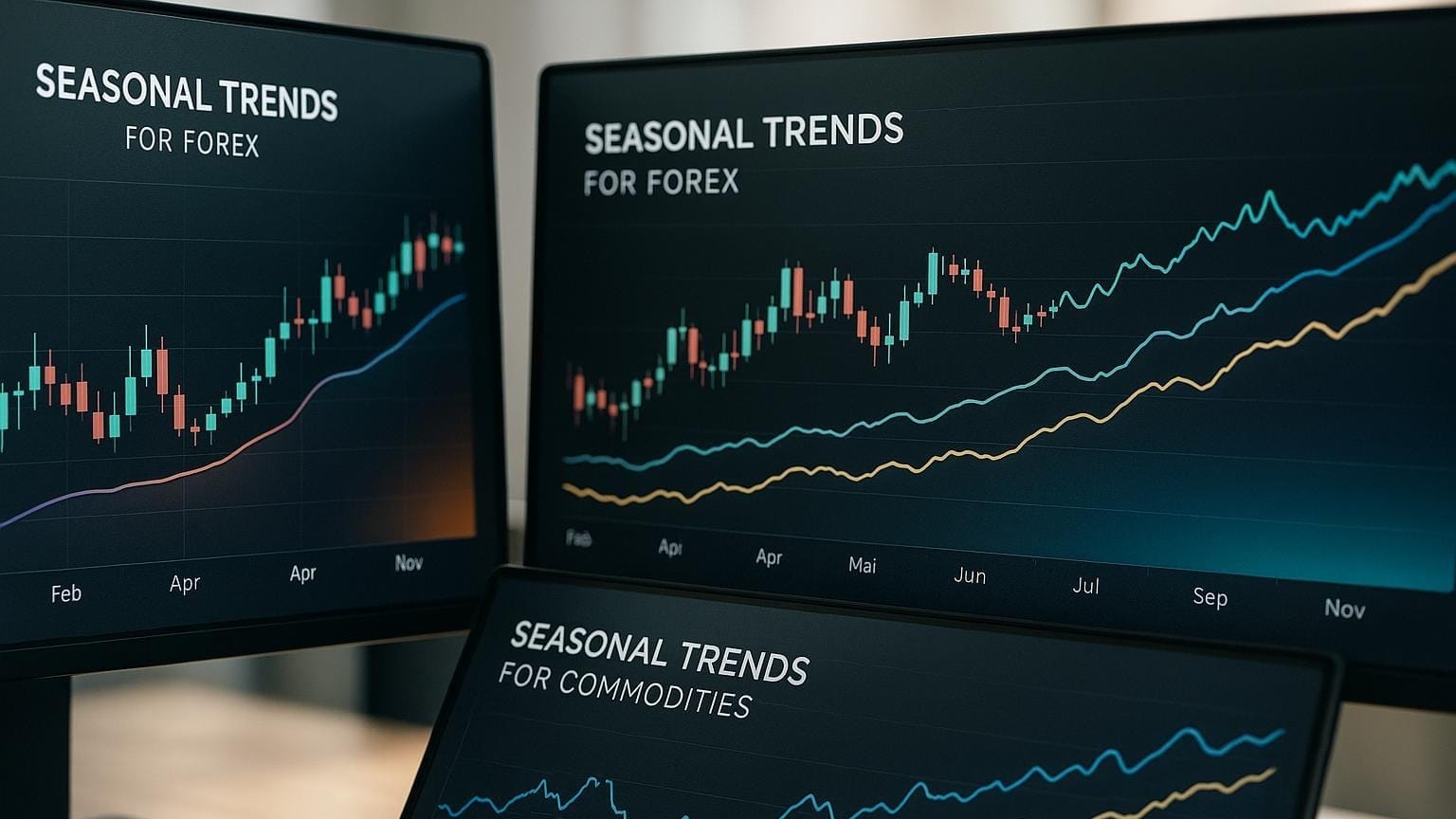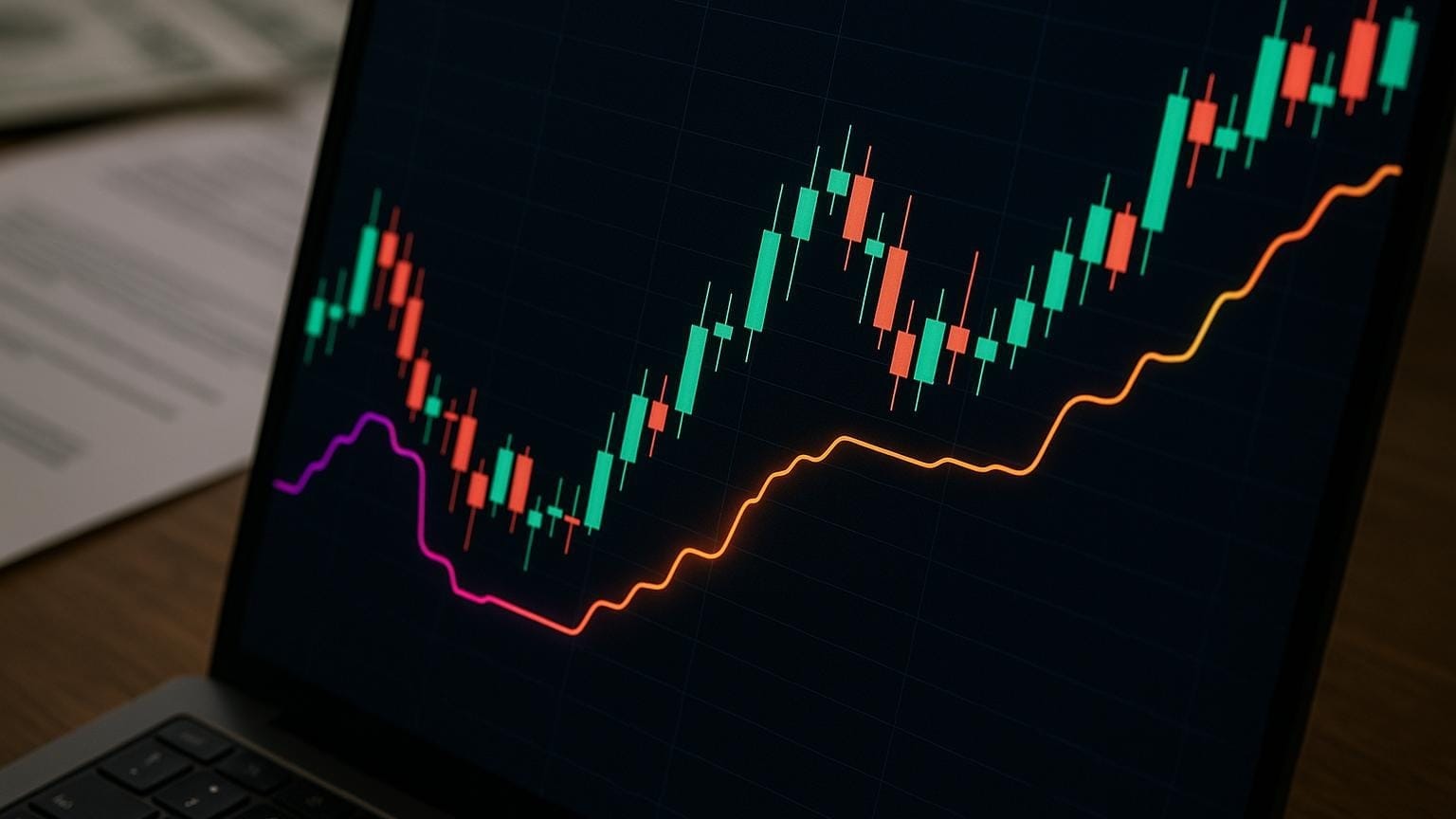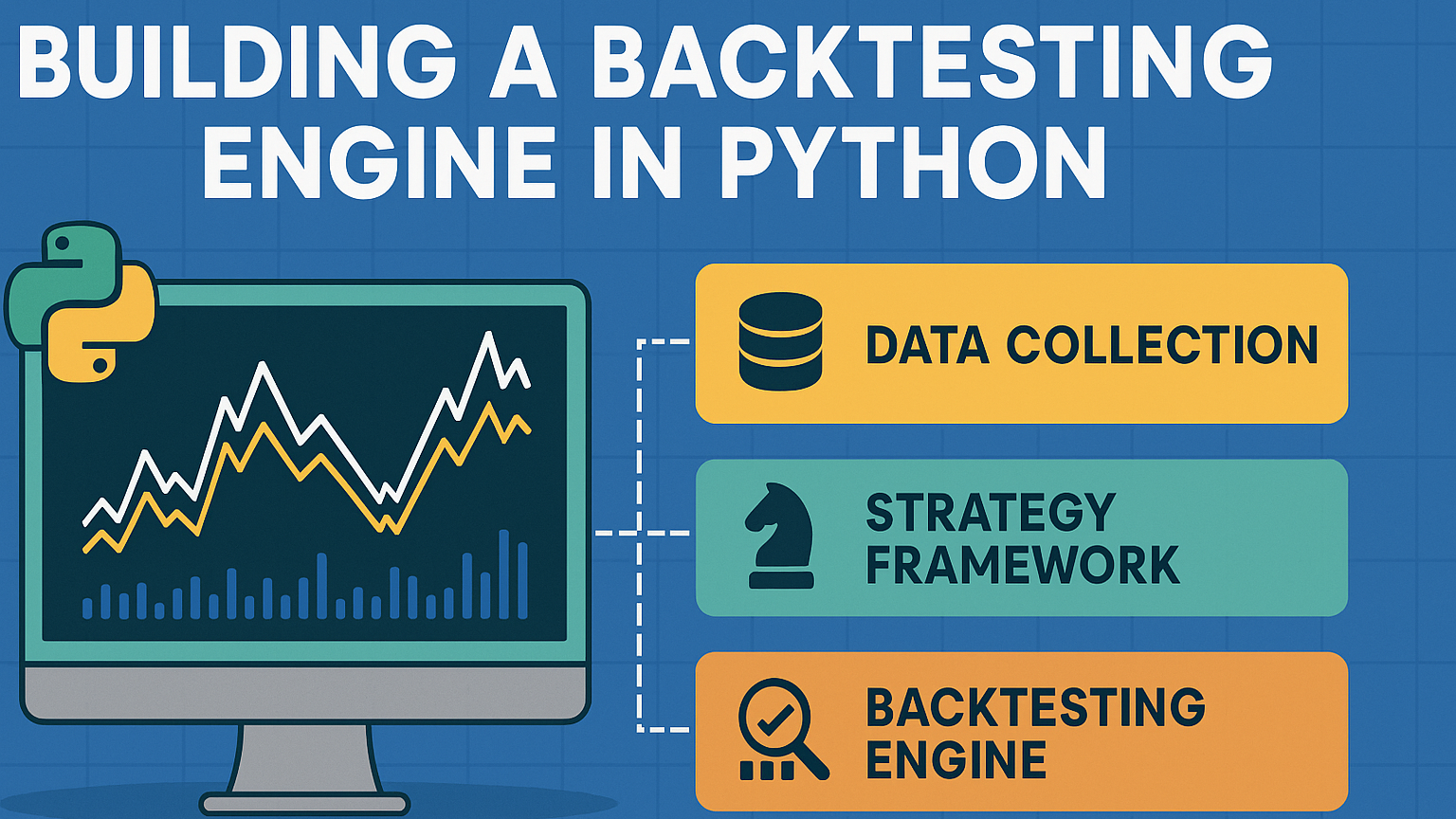Explore how seasonal trends impact trading across stocks, forex, and commodities, enhancing decision-making and risk management.
Seasonal trends in financial markets reveal recurring patterns influenced by factors like economic cycles, investor behavior, and external events. Traders use seasonal indicators to identify these trends across stocks, forex, and commodities, improving trade timing and reducing risks. For instance, retail stocks often rise during holiday seasons, and natural gas prices increase in winter.
Key points include:
- What is Market Seasonality? Predictable price trends tied to specific times of the year, such as the “January Effect” (explainer) or agricultural harvest cycles.
- Why Use Seasonal Indicators? They offer a statistical edge, improving decision-making by highlighting favorable periods for trades.
- Multi-Instrument Analysis: Seasonal trends vary across asset classes, like stock sectors, currency pairs, and commodities, providing diversification opportunities.
- How to Identify Trends: Historical data is normalized into percentage returns, analyzed, and visualized through charts like heat maps or rolling seasonal analysis.
- Detrended Analysis: Removes long-term trends to isolate cyclical patterns, refining strategies and timing.
- LuxAlgo Provides: LuxAlgo provides trading tools on TradingView and the web for seasonal analysis, including AI backtesting, real-time alerts, and cross-asset comparisons.
Seasonal trading works best when combined with technical analysis, risk management, and a focus on current market conditions. Commodities often show the clearest seasonal patterns, making them a great starting point for traders. Use LuxAlgo’s tools to refine strategies and monitor evolving trends. For concepts like the “Santa Claus Rally,” see this seasonality overview.
Build a Seasonal Analysis Indicator for thinkorswim in Under 25 Minutes
How to Identify and Plot Seasonal Trends
Spotting seasonal trends involves analyzing historical data, applying statistical methods, and creating visual representations. This process builds on prior knowledge about market seasonality.
Using Historical Data for Seasonality Analysis
The foundation of any reliable seasonal analysis lies in high-quality, long-term price data, normalized into percentage returns. Ideally, you’ll need at least 10–15 years of data to account for market cycles and varying economic conditions and to reduce the impact of outlier years.
Start by gathering daily, weekly, or monthly price data, depending on the seasonal trend you’re examining. For instance, if you’re looking at broad market trends like the “Santa Claus Rally”, daily data spanning decades provides the clearest picture. On the other hand, for commodity cycles tied to agricultural seasons, weekly or monthly data might be more appropriate. For context on seasonality charts and methods, see this primer.
To ensure consistency, convert raw prices into percentage changes. This step removes distortions caused by long-term trends and highlights genuine seasonal behaviors. Once normalized, statistical tests can confirm whether the patterns observed are more than just random noise. For example, a pattern that appears in 7 out of 10 years may seem compelling, but statistical analysis determines if this frequency is statistically significant and not the result of data mining or survivorship bias.
For sector rotation analysis, you’ll need to compare performance across different industries (what sector rotation means). For instance, analyzing technology stocks against the broader market can help pinpoint periods of seasonal outperformance or underperformance for the sector.
With normalized and verified data in hand, the next step involves translating these findings into visual charts.
Creating Seasonality Charts
Seasonality charts take the processed data and turn it into actionable visuals. These charts typically highlight average performance during specific calendar periods, such as monthly, weekly, or even daily trends.
- Monthly charts show average returns for each month over the historical period studied. For example, a chart for certain indices might reveal stronger performance in November and December, with weaker returns in September.
- Overlay analysis lets you compare multiple years of data on the same chart, making it easier to spot consistent seasonal patterns or identify years when the trend didn’t hold.
- Heat maps use color coding to visualize performance intensity over time. For instance, a heat map for crude oil might use darker shades to indicate months with historically stronger performance and lighter shades for weaker periods.
- Multi-instrument comparison charts allow traders to compare seasonal trends across assets like gold, silver, and platinum. This can reveal when these assets tend to move in sync or diverge seasonally.
- Rolling seasonal analysis uses moving windows of data to create dynamic charts, showing how seasonal patterns evolve. This approach highlights whether trends are becoming stronger, weaker, or shifting entirely.
Detrended Seasonality and Its Uses
Building on statistical techniques, detrended analysis removes long-term trends to isolate cyclical patterns, giving a clearer picture of seasonal behaviors.
Detrending involves removing linear or exponential trends from historical price data. For example, a stock that has risen 300% over 20 years may show positive returns in most months due to its overall uptrend. Detrending reveals which months performed better or worse relative to that underlying growth.
Several detrending methods provide deeper insights:
- Relative strength detrending compares an asset’s seasonal performance to a benchmark index.
- Volatility-adjusted detrending accounts for differences in market volatility over time.
- Economic cycle detrending removes the effects of business cycles, identifying seasonal trends that persist across varying economic conditions.
Detrended analysis can refine timing decisions. While raw data might suggest buying in March, detrended insights could point to mid-February as the optimal entry point, allowing traders to act before a trend becomes widely apparent.
This method also supports mean reversion strategies (what mean reversion implies), which assume that prices will return to their seasonal norms after significant deviations. Detrended data helps pinpoint when prices have strayed too far from their typical seasonal levels, highlighting potential trading opportunities.
Seasonal Indicators for Different Asset Classes
Each asset class has its own seasonal rhythms, shaped by economic cycles, institutional behavior, and external factors like weather or consumer habits. By understanding these patterns, traders can fine-tune their strategies to make the most of opportunities in stocks, currencies, and commodities.
Stock Market Seasonal Trends
Stock markets are influenced by recurring factors such as earnings cycles, tax deadlines, and institutional activity. One well-known example is the “January Effect.” Another notable trend is the “Santa Claus Rally.” On a broader scale, September has historically been a weaker month for stocks, while the end of the year often brings stronger performance. These tendencies are based on long-term averages and should always be treated as probabilities, not guarantees.
Sector-specific trends also create opportunities. Technology stocks, for instance, often perform well during earnings seasons, while retail stocks tend to shine in the fall as holiday shopping ramps up. Energy stocks frequently benefit from increased gasoline demand during the summer months.
While these stock market trends are significant, the forex and commodity markets have their own unique seasonal patterns worth examining.
Forex Market Seasonality
Currency markets are shaped by economic cycles, central bank policies, and global trade flows. For example, the U.S. dollar often strengthens in certain months due to institutional rebalancing but tends to weaken around year-end as traders lock in profits.
The EUR/USD pair exhibits seasonal behavior as well, and the Japanese yen often strengthens in March as Japan’s fiscal year ends before easing in April. In early fall, risk-averse moves can lead to yen appreciation, driven by unwinding of carry trades. For a definition of a carry trade, see this overview.
Commodity-linked currencies like the Australian and Canadian dollars also show seasonal tendencies. Central bank meetings can amplify these seasonal patterns, creating periods of heightened volatility.
Commodity Seasonal Cycles
Commodities are deeply influenced by seasonal cycles tied to weather, harvest schedules, consumption trends, and even climate events like El Niño. Agricultural commodities follow predictable patterns—corn prices often dip during harvest and recover later (ag seasonality basics).
Energy markets also exhibit strong seasonal trends. Natural gas prices typically rise in winter due to heating demand, while crude oil tends to strengthen during the summer driving season. Precious metals like gold and silver respond to a mix of industrial demand and external factors.
Understanding these cycles can help traders anticipate price movements and navigate the unique dynamics of each asset class effectively.
Tools and Features for Seasonal Analysis
The right tools can turn raw data into actionable insights, helping traders align their strategies with recurring market trends. LuxAlgo provides features designed to surface both basic and advanced seasonal analysis.
LuxAlgo’s Seasonal Indicators
LuxAlgo provides free indicators that integrate with TradingView, making it easy to visualize seasonal trends across stocks, forex pairs, and commodities.
For more advanced capabilities, the Price Action Concepts (PAC) indicator automates pattern detection, while S&O overlays highlight favorable seasonal periods.
One standout approach is monitoring how current price action aligns with historical trends using the Seasonality Chart.
AI Backtesting for Seasonal Strategies
LuxAlgo also provides AI-powered backtesting to fine-tune seasonal strategies. The AI Backtesting Assistant lets you test ideas across timeframes and instruments. You can learn more in the docs.
The AI system uses historical data to optimize strategies. For example, a trader aiming to buy natural gas in the fall and sell in the spring can use the platform to refine timing or position sizing. The platform also supports cross-asset seasonal correlation analysis, helping identify instruments that move in tandem during specific seasonal periods.
LuxAlgo Seasonal Analysis Tool Comparison
Here’s a breakdown of seasonal-analysis-related features by plan:
| Feature | Free Plan | Premium | Ultimate |
|---|---|---|---|
| Basic Seasonal Plotting | Multiple instruments | Enhanced visualization | Advanced overlays |
| Historical Pattern Recognition | Limited | PAC indicator included | Full pattern suite |
| Real-time Seasonal Alerts | Not available | Custom alert creation | Priority alerts |
| AI Strategy Optimization | Not included | Not included | Full AI platform access |
| Cross-Asset Analysis | Manual only | S&O overlays | Automated correlation |
| Backtesting Capabilities | External tools needed | Basic backtesting | Three dedicated backtesters on TradingView |
| Support Level | Community | 24/7 live support | Priority 24/7 support |
Pricing & Plans: Free ($0, lifetime access to the Library with hundreds of tools across 5+ platforms). Premium ($39.99/month) provides advanced signals, alerts, and oscillator tools on TradingView. Ultimate ($59.99/month) includes the AI Backtesting platform at luxalgo.com/backtesting in addition to everything in Premium.
Both Premium and Ultimate subscriptions also feature integrated screeners that help traders quickly identify instruments entering their strongest seasonal phases. The Ultimate plan adds weekly scanners, bots, and shared backtests, making it easier to refine seasonal strategies.
Best Practices for Using Seasonal Indicators
Seasonal trading isn’t just about knowing the tools—it’s about weaving them into a disciplined strategy.
Combining Seasonality with Technical Analysis
Seasonal patterns are a great starting point, but they work best when paired with technical analysis. For instance, while historical data might indicate that natural gas typically rallies from October through March, relying solely on the calendar can lead to poorly timed trades.
Use seasonal indicators to guide directional bias, then confirm entries with indicators such as the Relative Strength Index (RSI) or MACD. Volume tools like the Volumetric Toolkit help validate moves.
The Detrended Price Oscillator (DPO) (what DPO measures) can highlight shorter-term cycles and help confirm whether price swings align with the underlying seasonal window. When seasonality and technicals conflict, prioritize risk management.
Adapting Seasonal Strategies by Asset Type
- Equities: Often revolve around earnings cycles, tax deadlines, and institutional rebalancing.
- Forex: Patterns can reflect data releases and central-bank cycles.
- Commodities: Strong seasonal drivers tied to weather, planting/harvest, and storage costs.
Position sizing should reflect pattern reliability—commodity patterns with clear drivers may justify larger allocations than equity seasonality, which often benefits from diversification.
Common Seasonal Analysis Mistakes to Avoid
- Treating patterns as guarantees: Seasonal trends are probabilities, not certainties. Markets can deviate from seasonal norms due to unexpected events or shifts in market structure.
- Ignoring current conditions: Don’t rely solely on the calendar.
- Failing to monitor evolving patterns: Seasonal trends can weaken or shift over time.
- Overlooking broader market trends: Macro events can dominate seasonal effects.
- Poor position management: Use stop-losses and targets based on technical levels.
- Sample size issues: Ensure enough history and relevant drivers.
- Neglecting correlation: Concentrated exposure to the same driver increases risk.
Conclusion
Seasonal indicators highlight consistent market behaviors that recur year after year. Combined with robust risk management and technical confirmation, seasonality can improve timing and context across asset classes.
Key Points for Seasonal Analysis
Diverse asset analysis is crucial. By examining multiple instruments, traders can spread risk across different seasonal themes and timeframes.
The most effective seasonal strategies combine historical patterns with technical confirmation. Signals like momentum shifts, volume changes, and price action working with seasonality improve reliability.
Detrended analysis helps isolate pure seasonal effects, revealing recurring patterns that may otherwise be hidden.
Risk management is critical in seasonal trading, as positions are often held longer. Using stop-loss levels based on technical indicators can help mitigate losses when patterns deviate from expectations.
Getting Started with Seasonal Trading
Begin by pairing seasonal insights with strong risk management practices. Start small with assets that exhibit well-defined seasonal cycles. Energy, agricultural products, and precious metals often display patterns that are easier to analyze.
Use LuxAlgo’s tools and AI Backtesting to refine your strategy. Start with one or two asset classes and expand over time. This broader perspective opens doors to strategies like pairs trades and sector rotation.
Success in seasonal trading requires adaptability. Patterns evolve; what worked in the past may not always hold true. Regularly update analyses and fine-tune strategies. LuxAlgo’s updates and community can help you stay informed and uncover fresh opportunities.
FAQs
How can I use seasonal indicators with technical analysis to enhance my trading strategy?
To refine your trading strategy, start by examining seasonal trends through historical market data. Pay attention to patterns that tend to repeat during specific times of the year and how they might affect price movements. These insights can provide a solid foundation for spotting opportunities.
Once you’ve identified these trends, pair them with technical analysis tools like moving averages, Fibonacci retracements, or trendlines. For an even sharper edge, confirm timing with oscillators or volume trends.
This combination of seasonal patterns and technical analysis creates a more structured approach to trading. It not only helps you capitalize on predictable market behavior but also keeps risk management at the forefront of your strategy.
What are the main advantages of using detrended analysis in seasonal trading, and how can it improve your strategy?
Detrended analysis strips away long-term market trends so you can focus on seasonal and cyclical patterns. By cutting through noise, it’s easier to spot genuine cycles and avoid misleading signals.
This method sharpens strategy development by improving entry and exit timing. It also makes seasonal forecasts more dependable by emphasizing the market’s natural behaviors. For more systematic building, see AI Backtesting strategy fetching.
What are the unique seasonal trends of stocks, forex, and commodities, and how can traders use them to make informed decisions?
Seasonal trends shape stocks, forex, and commodities in distinct ways. Stocks often perform better between November and April; forex patterns can reflect central-bank cycles; commodities move with weather and production schedules. Align your entries with both seasonal context and technical confirmation.
References
LuxAlgo Resources
- Seasonality Widget
- Market Performance by Yearly Seasons
- Seasonality Chart
- AI Backtesting Assistant
- Signals & Overlays Alerts (Docs)
- Price Action Concepts (Indicator)
- Historical Correlation
- Correlation Tracker
- Adaptive Momentum Oscillator
- Volumetric Toolkit
- Market Structures (Docs)
- Liquidation Levels
- Market Structure Intrabar
- AI Backtesting: Fetching Strategies
- AI Backtesting Assistant (Docs)
External Resources
- January Effect — Investopedia
- Santa Claus Rally — Investopedia
- Seasonality — Investopedia
- Sector Rotation — Investopedia
- Mean Reversion — Investopedia
- Relative Strength Index (RSI) — Investopedia
- Detrended Price Oscillator (DPO) — Investopedia
- Carry Trade — Investopedia
- Agricultural Seasonality — CME Group
- TradingView
- thinkorswim® — Charles Schwab
- Yen Carry Trade — LuxAlgo Blog








